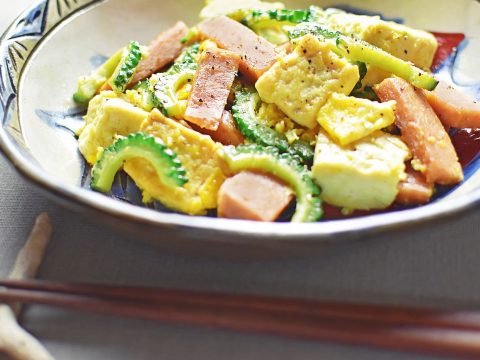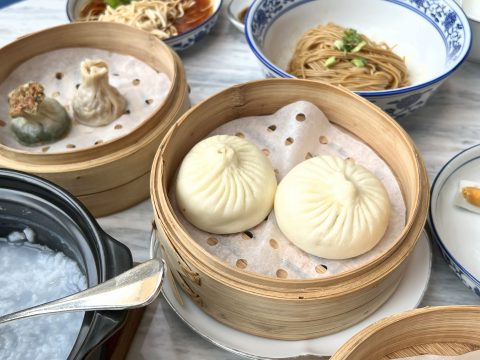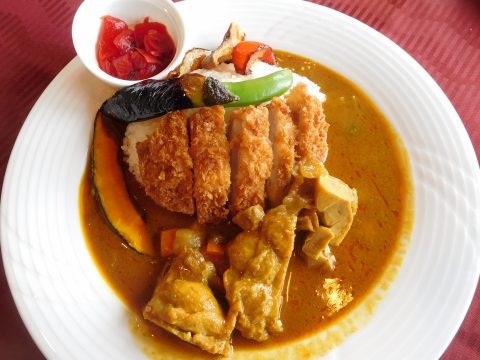Ochazuke(お茶漬け)
JAPANESE FOODS
10.09.2023
In the realm of homemade Japanese comfort food, there exists a simple dish known as ochazuke. Ochazuke, for many Japanese people, fosters a sense of nostalgia, comfort, and simplicity. It combines the delicate flavours of green tea (ocha) and rice (zuke) with various toppings, creating an easy-to-prepare light meal or late-night snack. Join me, as we explore the history, preparation, and variations of ochazuke.
A Brief History of Ochazuke
Ochazuke‘s roots can be traced back to the Heian period when Japanese people would consume it as a way to use up the leftover rice from previous meals. During the Edo period, ochazuke became a symbol of thriftiness and practicality, as it allowed people to make the most of their available ingredients.
Initially, it was a simple dish consisting of rice and hot water infused with tea, but over time, ochazuke evolved alongside people’s tastes and different regional influences. Today, ochazuke remains a beloved dish that can be enjoyed in traditional Japanese restaurants or easily prepared at home.

What’s in Ochazuke?
One appeal of ochazuke is its simplicity, making it easy to customise according to individual preferences. The key components of ochazuke are:
- Rice: A foundation of steamed white rice or, occasionally, brown rice forms the base.
- Green tea: A fragrant green tea, is poured over the rice. The amount of tea can vary based on personal taste.
- Toppings: Various toppings are used to enhance the flavours of ochazuke. Common toppings include:
- Umeboshi : Pickled Japanese plums add a tangy and savoury taste.
- Nori : Seaweed sheets, torn or cut into small pieces, for some salt and texture.
- Tsukemono : Assorted pickled vegetables, such as pickled daikon radish or umeboshi zuke (pickled plums), add crunch and flavour.
- Grilled fish: Cooked and flaked fish, like salmon or mackerel, contribute protein, richness and maybe even umami (see our article on umami!).
- Sesame seeds: Roasted sesame seeds for a nuttier taste.
- Wasabi : A splodge of spicy wasabi can provide a kick of heat, if you like.
Pre-prepared topping pouches can also be bought at any supermarket or convenience store. These pouches will often contain a dried mix of ingredients like nori or bonito flakes.

Preparing and Enjoying Ochazuke
Preparing ochazuke really is just as simple as you might expect! To enjoy this dish all you have to do is:
Place a serving of cooked rice in a bowl.
Arrange the desired toppings over the rice.
Pour hot green tea over the rice and toppings, adjusting the amount to your liking.
Amazing, right?!
Vartiations of Ochazuke
The popularity of the flavour of ochazuke has given rise to diverse interpretations of this homely dish. As mentioned above, one of the appeals of ochazuke is its adaptability. However, the flavours of ochazuke primarily come from its toppings. One can alter the toppings to suit one’s tastes easily, or, alternatively, add these toppings to something else, intertwining the ochazuke essence with varying textures and sensations.
One example of this is “pasta ochazuke”. The dish combines the toppings of ochazuke with the well-known Italian staple, often using spaghetti as the chosen pasta. The ochazuke seasoning introduces a distinctly Eastern touch to the dish, while the texture of the pasta lends a more sophisticated implication.

Ochazuke transcends being just being a modest combination of rice and tea; it serves as an example of the ability to find contentment in life’s little pleasures. Whether you’re in pursuit of a nurturing and comforting dish or aiming to establish a connection with the roots of Japanese cuisine, ochazuke is prepared to welcome your palate with open arms and infuse warmth into your spirit. Therefore, the next time you want an uncomplicated yet satisfying meal, how about trying this enchanting Japanese comfort food?

Ella Clayton
Ella Clayton is a food writer, traveler, and all-around Japan enthusiast. Studying in Japan for her bachelor’s degree, she has ventured from Kansai and Kanto, and can say definitely: Osaka style Okonomiyaki is the best.
Read previous articles by the writer
Read latest articles
KEYWORDS
- # PICKPICK
- # Resume
- # alcohol
- # Rice
- # Soup
- # winter food
- # Fast Food
- # seafood
- # spicy foods
- # raw food
- # fermented food
- # Transportation
- # MEAT
- # Edo culture
- # suits
- # clothing
- # drink
- # fish
- # seasoning
- # Japanese New Years Foods
- # Toshikoshi soba
- # Osechi Ryori
- # Ozoni
- # Christmas
- # Japanese fusion pasta
- # Wafu Pasta
- # Japanese Hot Pot
- # なべ
- # 鍋
- # Miyazaki
- # Chicken Nanban
- # Karamen
- # Autumn Wagashi
- # Mushi-yokan
- # Imo-yokan
- # Japanese Autumn Fruits
- # Autumn
- # Vending Machine
- # fall
- # dango
- # Chestnut rice
- # saury
- # Mushroom
- # Rice vinegar
- # Japanese condiments
- # 調味料
- # Sake
- # Mirin
- # Soy sauce
- # Japanese Noodles
- # Udon
- # Ramen
- # Yakisoba
- # Soba
- # Japanese Seaweed
- # 海藻
- # かいそう
- # Payslip
- # Training
- # Japanese summer foods
- # 和菓子
- # Wagashi
- # ryokucha
- # 夏
- # 飲み物
- # Ramune
- # ラムネ
- # Pokari Sweat
- # ポカリスエット
- # Calpis
- # カルピス
- # Mugicha
- # ume
- # 梅
- # うめ
- # umeshu
- # job hunting
- # tofu
- # Recruitment in Japan
- # miso
- # Japanese cuisine
- # Yellowtail and bonito
- # Children’s Day
- # Kashiwa Mochi
- # Chimaki
- # fruits
- # Kusamochi
- # Types of Agriculture in Japan
- # bread
- # パン
- # パン屋さん
- # japanese bread
- # shokupan
- # meal blead
- # anko bread
- # 桜
- # さくら
- # cherry blossom
- # visa
- # hanami
- # omotenashi
- # sakura
- # おもてなし
- # Japanese hospitality
- # oshibori
- # wet hand towel
- # hand towel
- # restaurant
- # Commuting in Japan
- # Women-only cars
- # Exit gate
- # japanese train
- # train
- # valentine
- # Japanese sweets
- # 朝食
- # Japanese Breakfast
- # Breakfast
- # Japanese
- # 日本
- # healthy
- # persimmons
- # hoshigaki
- # HR
- # work in Japan
- # jinji ido
- # corporate systems
- # Japanese work culture
- # bento
- # ekiben
- # shinkansen
- # omiyage
- # train station
- # Japanese culture
- # work culture
- # mentaiko
- # umeboshi
- # Japanese snacks
- # potato chips
- # Japanese potato chips
- # Japanese writing
- # seaweed
- # konbu
- # ocean foods
- # shio konbu
- # dashi
- # miso soup
- # food processing
- # pear
- # nashi
- # sweet potato
- # japanese sweet potato
- # stingray
- # satsuma imo
- # food value chain
- # homecooking
- # agriculture
- # Japanese homecooking
- # farming
- # nikujaga
- # shojin ryori
- # meat and potatoes
- # traditional foods
- # comfort food
- # buddhist food
- # manufacturing
- # factory
- # eihire
- # vegetarian
- # food and beverage
- # izakaya
- # yatai
- # japanese festival
- # taiyaki
- # matsuri
- # summer
- # Ikayaki
- # smart agriculture
- # shaved ice
- # kakigori
- # かき氷
- # summer dessert
- # Japan
- # Japanese foods
- # dessert
- # fruit
- # matcha
- # icecream
- # Pikcup
- # Pikc up
- # Pcikup
- # skilled labor visa
- # working visa japan
- # Dineer Table in Japan
- # Japanese manner
- # Japanese food
- # Japanese Table Manner
- # Chopsticks
- # Japanese traffic signs
- # traffic information
- # road rules in Japan
- # chocolate
- # green tea
- # Osaka
- # Work Japan
- # Japanese company
- # ikura
- # sushi
- # nigiri
- # wasabi
- # PCIK
- # PICK UP
- # PICK
- # PICKUP









